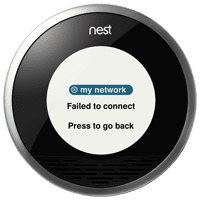 Businesses are confounded by what the Internet of Things is, nevermind how to begin using it. In particular, it is consumer-facing companies that are struggling the most. Part of the issue is that those in customer-facing roles—marketing, sales, customer service, etc.—are already overwhelmed with technology. Add IoT, a term that encompasses scores of different hardware, software, and connectivity components, as well as the sensationalist bright, shiny [connected] object-focus of its media coverage, and it’s no wonder companies struggle to apply it.
Businesses are confounded by what the Internet of Things is, nevermind how to begin using it. In particular, it is consumer-facing companies that are struggling the most. Part of the issue is that those in customer-facing roles—marketing, sales, customer service, etc.—are already overwhelmed with technology. Add IoT, a term that encompasses scores of different hardware, software, and connectivity components, as well as the sensationalist bright, shiny [connected] object-focus of its media coverage, and it’s no wonder companies struggle to apply it.
WTF is IoT anyway?
One of the biggest hurdles to applying IoT to business is understanding what it actually is (and isn’t), nevermind what it means. A recent study found 87% of consumers were not familiar with the term ‘Internet of Things.’ Familiarity only exists at the gadgets [things] level, not the larger meaning or potential of IoT. Overcoming this learning curve is critical to harnessing its potential. Brands must see beyond the longtail list of bleeding edge technologies and think about the Internet of Things as a platform for connecting people, objects, and environments to inform and enable visibility, action, and innovation.
Brands aren’t reacting to IoT, they’re trying to be proactive
One of the reasons harnessing IoT remains a challenge is because it is not already widely adopted across consumers. Consider that, when brands began to embrace social media, it was in response to a consumer shift in how people were communicating and spending their time online. This is less the case with IoT; rather brands are trying to proactively incorporate sensors into their customer-facing programs. To complicate matters, IoT’s current adoption is as dispersed as the technology the term encompasses; wearable adoption is between 10-20%, in-home IoT device adoption lags at 4%, smartphone adoption is at an all-time high (75% in the U.S.). Ultimately, brands need not think about whether or not IoT is ‘the next big thing;’ instead focus on how they can use sensors to empower consumers with every interaction.
Fact: The potential for friction is high (but so is the benefit)
Any sober assessment of how to engage customers using the Internet of Things has a cold, harsh truth to face: the potential for friction is high.
- Big behavioral ask: Viewing and interacting with everyday objects as though they were connected devices is a big mind-shift. While not every sensor-based customer engagement requires a learning curve (some are even ‘invisible’), brands must navigate this cultural/behavioral challenge mindfully and with empathy.
- Hardware-software convergence = inherent risk of friction: Although hardware and software are nothing new, combining them, whether in our homes, cars, in-store, or elsewhere invites new potential for friction. Device set-up, identity authentication, product functionality (including malfunction), service issues, nevermind external factors like children, pets, inside and outside environmental elements, etc. are all risks to failed user experience.
- Interoperability (way) easier said than done: The Internet of Things is fundamentally about connectivity, but realizing this is harder than it sounds. Reliable Internet, power, latency, costs, data integrity,, and industry alignment on shared standards and infrastructure for interoperability are critical, but still inconsistent today. Overcoming proprietary hurdles to integration is often a function of competitive giants (think Apple or Google) learning to play nice.
But there is good news: brands can take steps to build around this; friction doesn’t have to be high. In fact, what we found in our research was that brands who have implemented successful IoT activations do so not by reinventing behaviors, but by replacing them with subtle tweaks and adopting existing ‘templates for interaction.’ Companies advise starting small, not only to scope feasibility and receptiveness, and generate results, but to gain an actual sense of data needs in order to build the infrastructure for interoperability.
Culture, Uncertainty, & Doubt
There are a number of important cultural forces that complicate matters for businesses trying to apply IoT. Fear, uncertainty, and doubt around data privacy, security, and implications. Though less familiar with IoT, consumers are well acquainted with numerous examples of data breaches and privacy threats to Target, Home Depot, JP Morgan Chase, and many others. Our culture has not yet adapted its understanding of privacy in the digital age and this tension and the inevitability of unintended consequences, leaves many skeptical of ever more digitalization.
Finally, the IoT market itself is a wild west. There are a proliferation of start-ups– hundreds in the wearable fitness category alone. The wide variety of technologies within IoT makes for crowded but fragmented ecosystem, with plays from the largest tech giants on the planet, acquiring and/or competing with tiny start-ups. As the space consolidates and matures over time, interoperability will be one of the most critical hurdles.
Altimeter is publishing research to address how consumer-facing brands can first understand, contextualize, and then apply sensors to enhance customer experiences by approaching it through one (or more) of five primary use cases we identified in our research. We’ve identified a way of looking at the Internet of Things outside of the technology, and fostering a model for creating mutual benefit.
—
This post was originally posted on Altimeter Group’s blog and can be found here.

